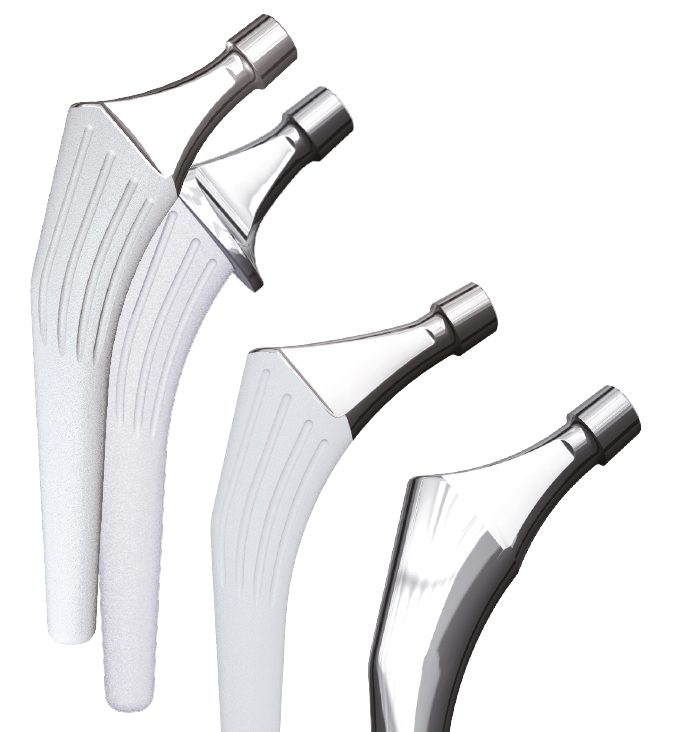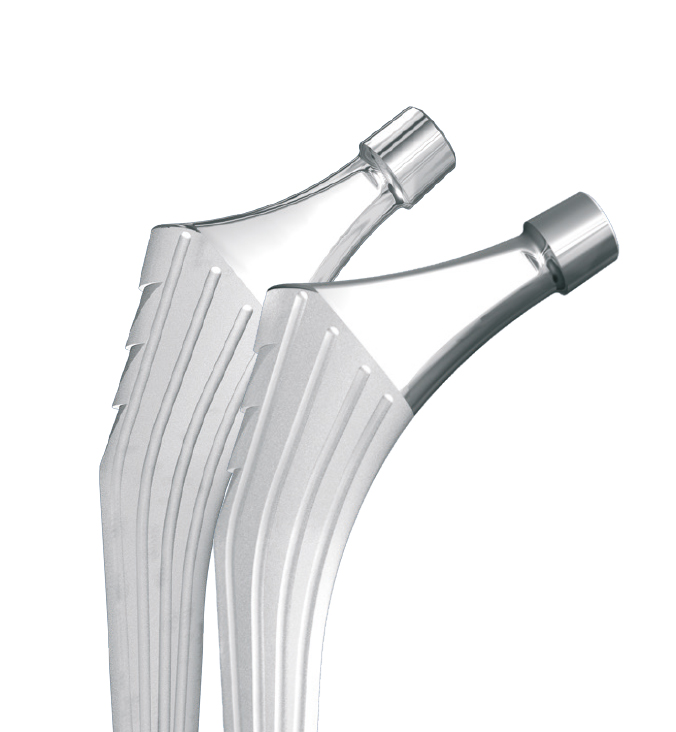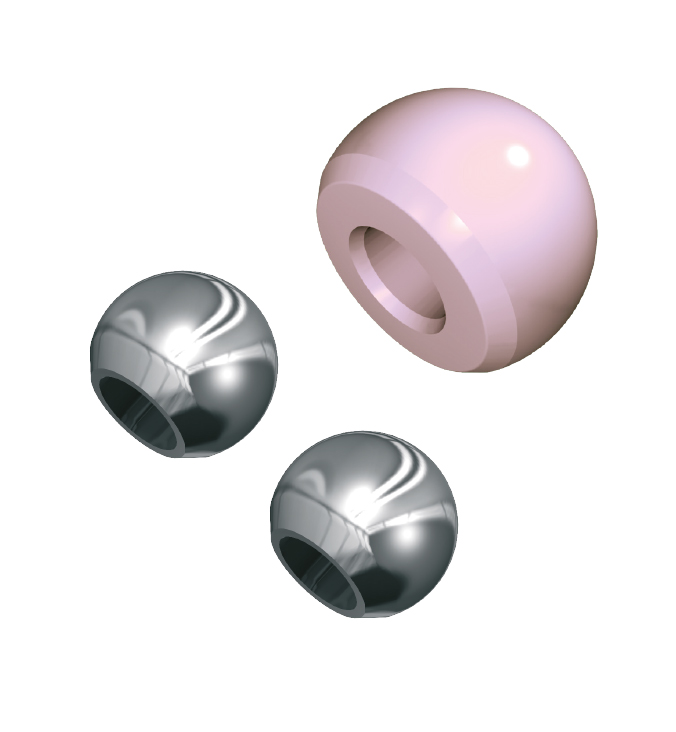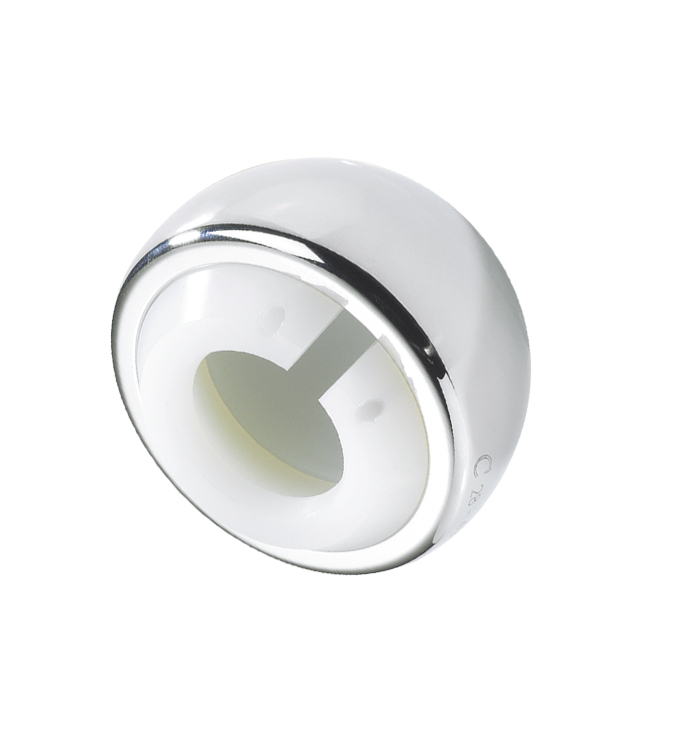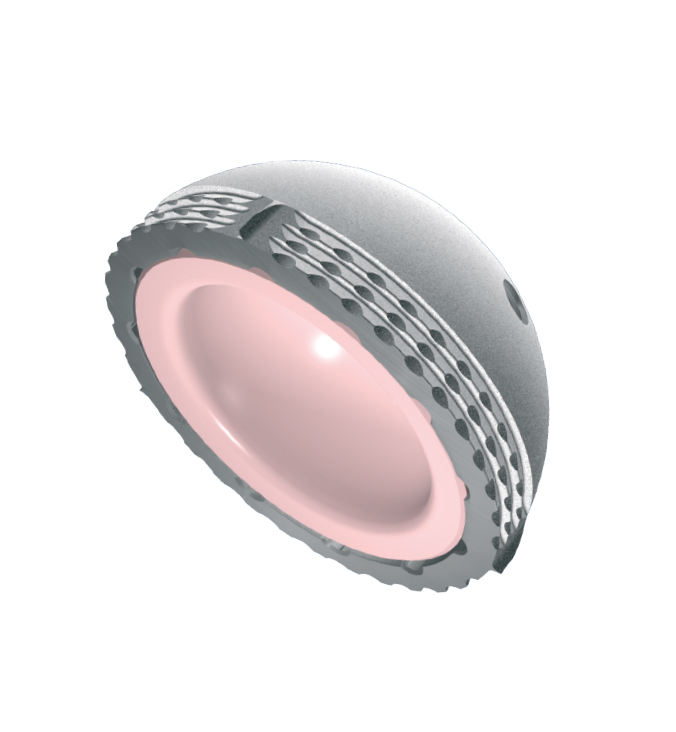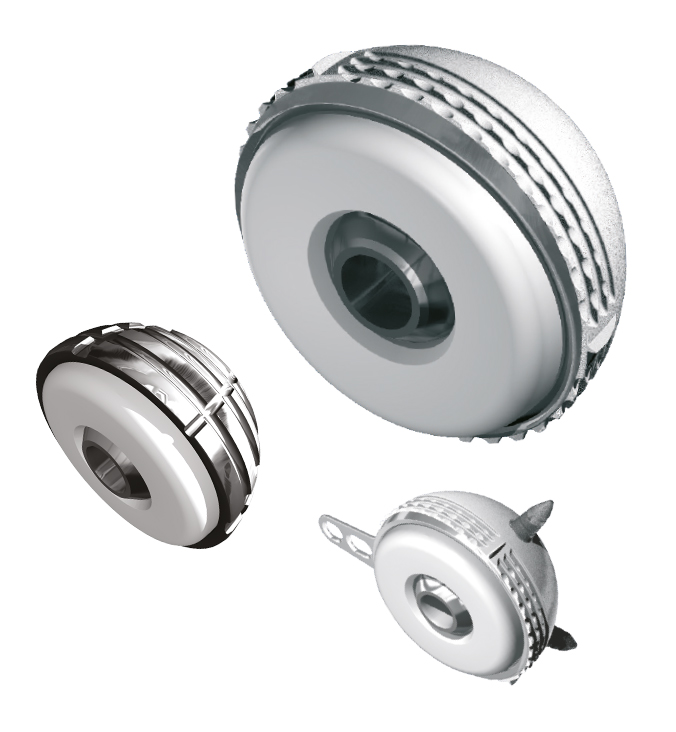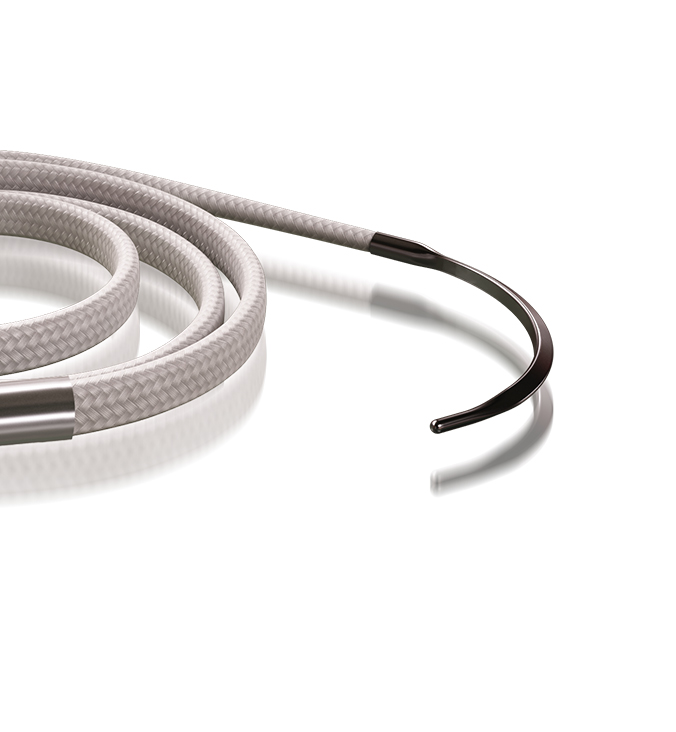ATLAS Elastic cup
The ATLAS design was born in 1985 of Dr Alain Dambreville’s observations.
It is a cementless elastic cup, whose primary fixation is obtained by means of a slot and 4 pins; 5 fixation holes also allow screws to be added, depending on the quality of the bone. The Atlas cup has been in clinical use for over 35 years.
The ATLAS cementless elastic cup that has been in clinical use for more than 35 years.
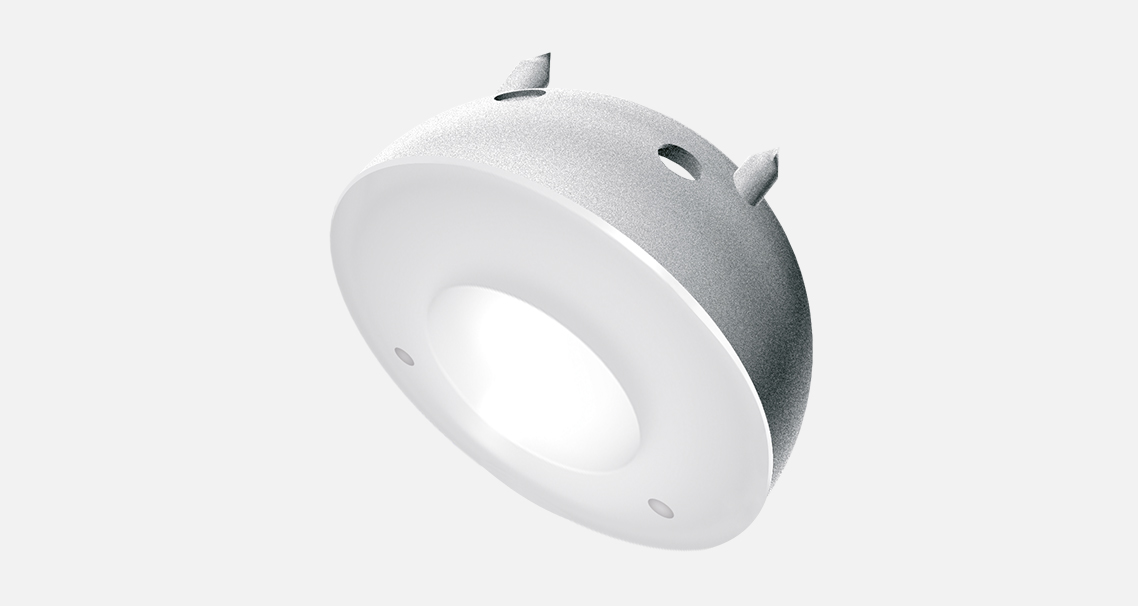
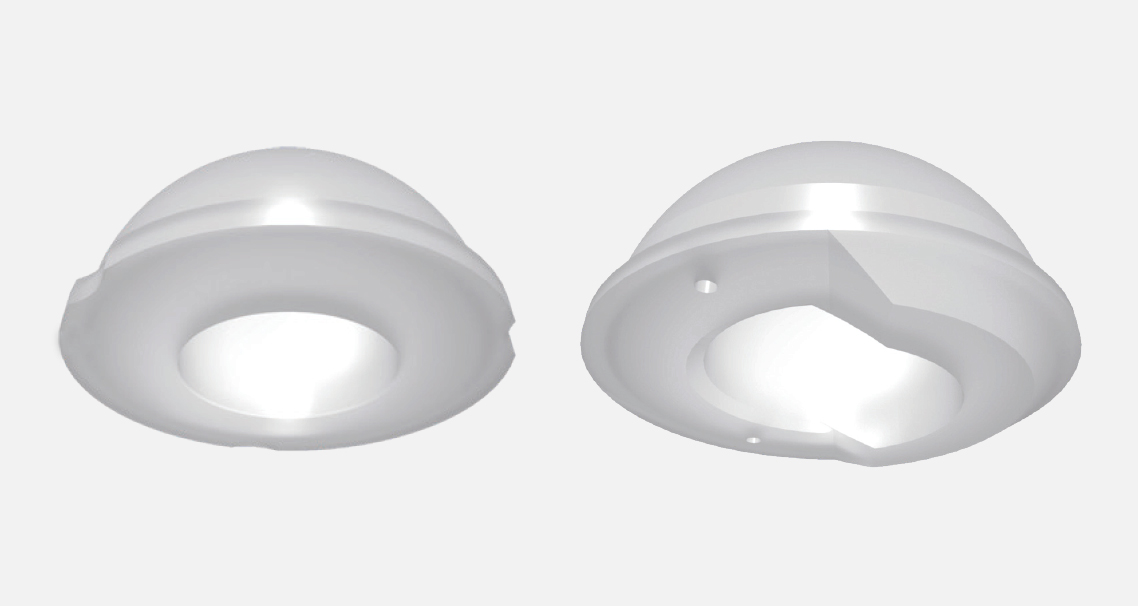
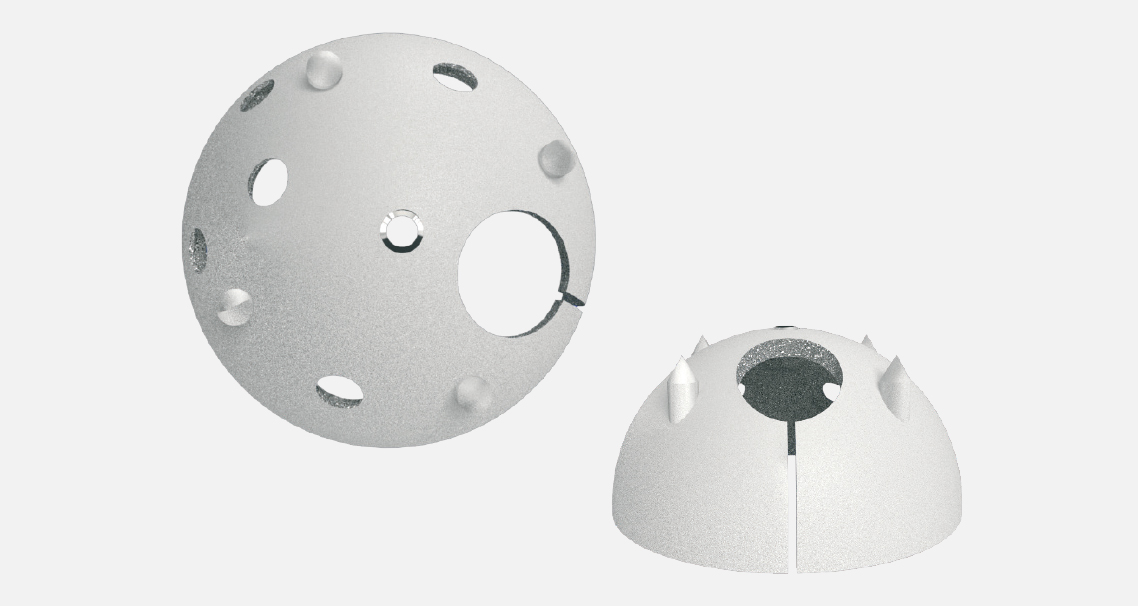
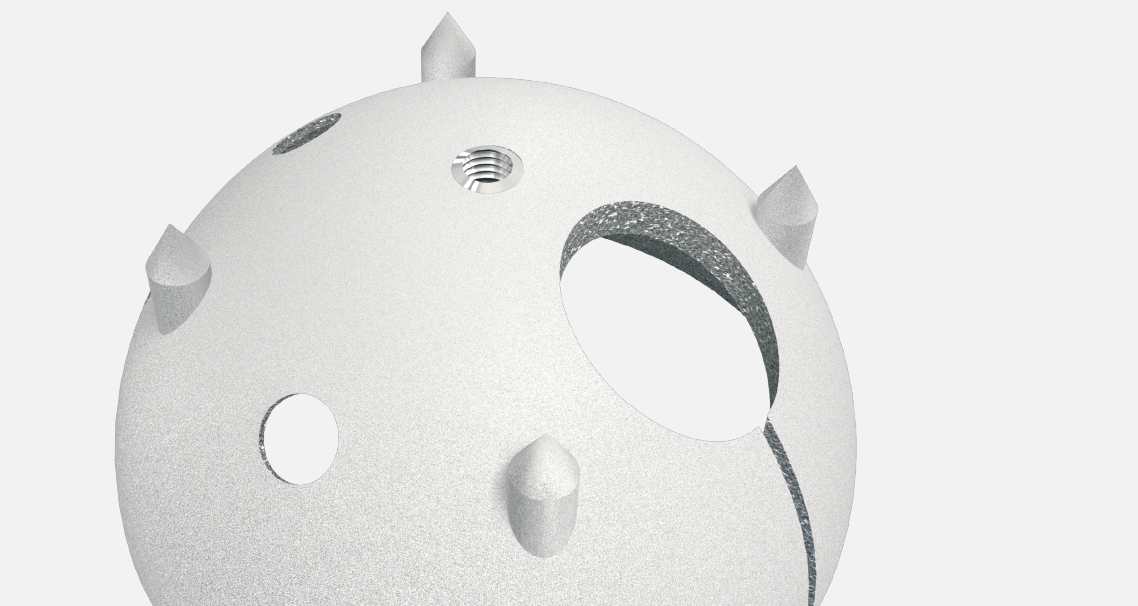
ATLAS Elastic cup
The ATLAS design was born in 1985 of Dr Alain Dambreville’s observations.
It is a cementless elastic cup, whose primary fixation is obtained by means of a slot and 4 pins; 5 fixation holes also allow screws to be added, depending on the quality of the bone. The Atlas cup has been in clinical use for over 35 years.
The ATLAS cementless elastic cup that has been in clinical use for more than 35 years.
Product line
The range is scaled from 2 mm to 2 mm, ranging from size 46 to 64 mm. The ATLAS metal-back is complemented by a wide range of highly cross-linked polyethylene liners (TRIANON), available in different internal diameters (28, 32 and 36 mm) and different shapes (flat edge and rear wall).
Features and materials
The ATLAS metal-back is made from a TA6V4 ELI titanium alloy with a constant thickness of 2.5 mm, with a hydroxyapatite coating. Highly cross-linked polyethylene liners, called TRIANON, are available:
- in 28 mm from size 46 to 64 mm,
- in 32 mm from size 50 mm to size 64 mm,
- in 36 mm from size 54 mm to size 64 mm.
Instrumentation
The ATLAS instrumentation is an instrumentation common to the different types of cups in the FH ORTHO range. This ancillary allows all classic approaches including minimally invasive approaches. It is supplemented by optional spacer baskets.
Publications
- Lee, P.Y., et al., Long-term results with the Atlas IIIP elastic cementless acetabular component in total hip replacement. Int Orthop, 2016.
- Philippe, M. and M. Ameil, Survival analysis at 10 years of a cohort of 297 atlas total hip prostheses. European Journal of Orthopaedic Surgery & Traumatology, 2007. 17(6): p. 573- 578.
- Dambreville, A., Minimum Ten-Year Follow-up of the Hydroxyapatite-Coated Atlas Cup, in Fifteen Years of Clinical Experience with Hydroxyapatite Coatings in Joint Arthroplasty. 2004, Springer Paris: Paris. p. 325-328.
- Dambreville, A., Assessing the stability of metal back acetabular inserts. A microscopic study of explants. European Journal of Orthopaedic Surgery & Traumatology, 2001. 11(4): p. 213-218.
- Dambreville, A. and J. Hummer, Friction couples and total hip prostheses. European Journal of Orthopaedic Surgery & Traumatology, 1999. 9(4): p. 237-240.
- Dambreville, A., Le cotyle ATLAS. Orthopédie Traumatologie, 1992. 2(2): p. 111-114.
Downloads and media
Download documentation
Download surgical technique
Interested in this product?

